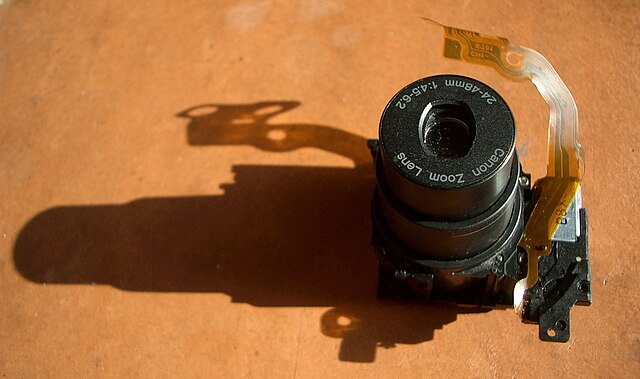The Tessar is a photographic lens design conceived by the German physicist Dr. Paul Rudolph in 1902 while he worked at the Zeiss optical company and patented by Zeiss in Germany; the lens type is usually known as the Zeiss Tessar. Since its introduction, millions of Tessar and Tessar-derived lenses have been manufactured by Zeiss and other manufacturers, and are still produced as excellent intermediate aperture lenses.
2 historical lenses Carl Zeiss, Jena, Nr. 145077 and Nr. 145078, Tessar 1:4,5 F=5,5cm DRP 142294 (produced before 1910)
Carl Zeiss Tessar 50/2.8 lens on Zeiss Ikon Contessa camera.
Tessar 40/3.5 lens made by Rollei.
Minox MDC Minoxar 35mm/2.8 lens, a wide angle Tessar type lens.
A camera lens is an optical lens or assembly of lenses used in conjunction with a camera body and mechanism to make images of objects either on photographic film or on other media capable of storing an image chemically or electronically.
Different kinds of camera lenses, including wide angle, telephoto and speciality
The zoom lens assembly of the Canon Elph
Apertures in 1-stop increments on the same lens.
How focal length affects photograph composition: adjusting the camera's distance from the main subject while changing focal length, the main subject can remain the same size, while the other at a different distance changes size.








